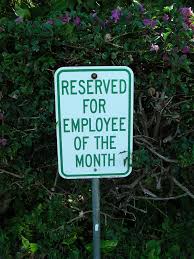
   July 28, 2018
Cause of Loss
A peril or a series of related perils that result in loss or lead to damage of property or cause bodily injury.
TruePoint Insurance is one of Georgiaís fastest growing insurance agencies. We are affiliated with SIAA, a network of over 5,000 insurance agencies across the US, who by joining together have increased their strength and stability...
1000 Pine Barren Rd.
Pooler, GA 31322
Phone : 912-330-1265
Email : info@truepointgroup.com

In order to drive a vehicle and/or trailer with a combined weight over 26,000 pounds, you are required to have a commercial driver’s license (aka a CDL.)¬† There are three different classes of CDL’s and six endorsements.¬† The classes¬†are:
As previously stated, the operator of any truck and trailer with over 26,000 Gross Vehicle Weight (GVW) is required to have a CDL.  Additionally, the driver of any truck hauling (or pulling a trailer) with a GVW that exceeds 10,000 must have a Class A CDL.
A Class B CDL is required to operate a vehicle with a combined weight of 26,001 pounds pulling another vehicle with a gross weight of that is less than 10,000 pounds.
Drivers of passenger vehicles carrying 16 or more people are required to have a Class C CDL.  The same is true of vehicles hauling hazardous materials.
In addition to the 3 classes, are 6 endorsements.  These six endorsements indicate successful completion and testing, authorizing the driver to operate specific types of commercial vehicles:
![]()
 Business owners have a lot at stake when it comes to determining whether persons connected with their ventures are employees or independent contractors. The largest issue with making this determination involves taxes and insurance.
Business owners have a lot at stake when it comes to determining whether persons connected with their ventures are employees or independent contractors. The largest issue with making this determination involves taxes and insurance.
A business has specific responsibilities for employees, having the legal obligations to withhold and pay certain taxes (Medicare, Social Security) and pay other taxes (unemployment). If a business makes a mistake with classifying employees, it faces the financial burden of paying additional taxes and could well be punished with substantial fines. However, there are issues that are just as critical regarding determining a service provider’s status and insurance. 
Many forms of both property and liability business insurance define the persons who qualify for protection under a given insurance policy. Property coverage is written for the direct benefit of the first party, the party who owns (or in other cases, has control or custody of) either real or business personal property. Liability coverage is written on behalf of persons defined as insureds, protecting them against harm they may cause to others or for damage they cause to property that belongs to others.
Employees are commonly granted coverage status in a variety of instances. However, coverage typically is not available to independent contractors who are considered unrelated third parties. FYI, under insurance contracts, the second party is the insurance company. Therefore, in many instances, if persons suffer losses under either property or liability policies, it is critical to be certain whether an individual is an employee or is independent.
 Because of the position held by policyholder/insureds and insurance companies, the classification of workers is often in conflict as insureds desire liberal coverage and insurers wish to restrict protection to qualified persons. However, both parties are best served when worker classifications are clear. Premiums charged to policyholders are based on correctly recognizing the parties eligible for coverage. Proper classification keeps coverage affordable and makes the insurance process more efficient. Coverage involving employees should be connected to an applicable business that employs them. Coverage involving independent contractors should be connected to the contractors. In other words, they should secure their own, separate coverage.
Because of the position held by policyholder/insureds and insurance companies, the classification of workers is often in conflict as insureds desire liberal coverage and insurers wish to restrict protection to qualified persons. However, both parties are best served when worker classifications are clear. Premiums charged to policyholders are based on correctly recognizing the parties eligible for coverage. Proper classification keeps coverage affordable and makes the insurance process more efficient. Coverage involving employees should be connected to an applicable business that employs them. Coverage involving independent contractors should be connected to the contractors. In other words, they should secure their own, separate coverage.
In part two, we will discuss methods to determine worker status.
COPYRIGHT: Insurance Publishing Plus, Inc. 2018
All rights reserved. Production or distribution, whether in whole or in part, in any form of media or language; and no matter what country, state or territory, is expressly forbidden without written consent of Insurance Publishing Plus, Inc.
   
  
Coinsurance is a term used in the insurance industry that refers to the sharing of risk.  Depending on the line of business, coinsurance can have different meanings.
When used in relations to health care insurance, coinsurance refers to a pre-agreed cost-sharing arrangement.  After the insured has met their deductible, coinsurance defines the cost-sharing split between the insurer and the insured up to a certain threshold.
In the Property & Casualty insurance sector, coinsurance can be used to identify the spread of risk between two insurance companies.  It is also used to establish limits for buildings and other property (primarily commercial.)  While the usage is somewhat counter-intuitive, the process is designed in the best interest of the insured.
Typically you will see the insurance clause in a commercial property policy set at 100% coinsurance, 90% coinsurance, and 80% coinsurance. At first blush, it would appear that 100% coinsurance was the most conservative choice why at 80% coinsurance the insured might be exposed to 20% of the loss.  THIS IS INCORRECT.
At 100% coinsurance, the insured has coverage up to the limit stated in the policy.¬† That’s okay, right? It’s¬†¬†okay until the replacement cost exceeds the limit.¬† Then the insured is on the hook for the difference.
At 80% coinsurance, the insured has the ability to protect themselves from have a replacement cost  estimate that is too low.  An 80% coinsurance clause gives the additional protection.  At 80% coinsurance, the limit on the structure is now effectively 125% (100/80) of the stated value.
estimate that is too low.  An 80% coinsurance clause gives the additional protection.  At 80% coinsurance, the limit on the structure is now effectively 125% (100/80) of the stated value.
![]()
Bailee Coverage or Bailee Liability Coverage protects businesses that through the course of business become charged with the care, custody, and control of the property of their clients.  Cleaners, computer repair shops, and watch or clock repair services are all examples of businesses that could be protected by the Bailee coverage option.
Bailee Coverage, normally considered to cover the legal liability of the shop owner can be written in other forms.  If so desired, it could be possible to find an option where claims will be paid for damages even when the business is not at fault.
Associated terms and phrases: Bailor Care, Custody, and Control Bailee
Bailee vs Bailor
Bailee is the party that is temporarily entrusted with the belongings and has no ownership
Bailor is the part with ownership interest that has left their property in the care, custody, and control of another where certain business services are provided.


Anyone (person or entity) that has, with the intention of receiving a service or other benefit, entrusted property with another person or entity.
Associated terms and phrases: Bailee Care, Custody, and Control Bailee Coverage
Bailee vs Bailor
Bailee is the party that is temporarily entrusted with the belongings and has no ownership
Bailor is the part with ownership interest that has left their property in the care, custody, and control of another where certain business services are provided.
Anyone (person or entity) that has temporary custody of the belongings of others.  This is normally associated with businesses that are performing a service.  Examples would include dry cleaning, watch or clock repair, and possibly a parking garage.
The insurance coverage that protects the business charge with the tempory care custody and control of client property is known as Bailee Coverage.¬† It is sometimes referred¬†to as Bailee’s Coverage and also Bailee Liability Coverage.
Associated terms and phrases: Bailor Care, Custody, and Control Bailee Coverage
Bailee vs Bailor
Bailee is the party that is temporarily entrusted with the belongings and has no ownership
Bailor is the part with ownership interest that has left their property in the care, custody, and control of another where certain business services are provided.

2018 TruePoint Insurance all rights reserved